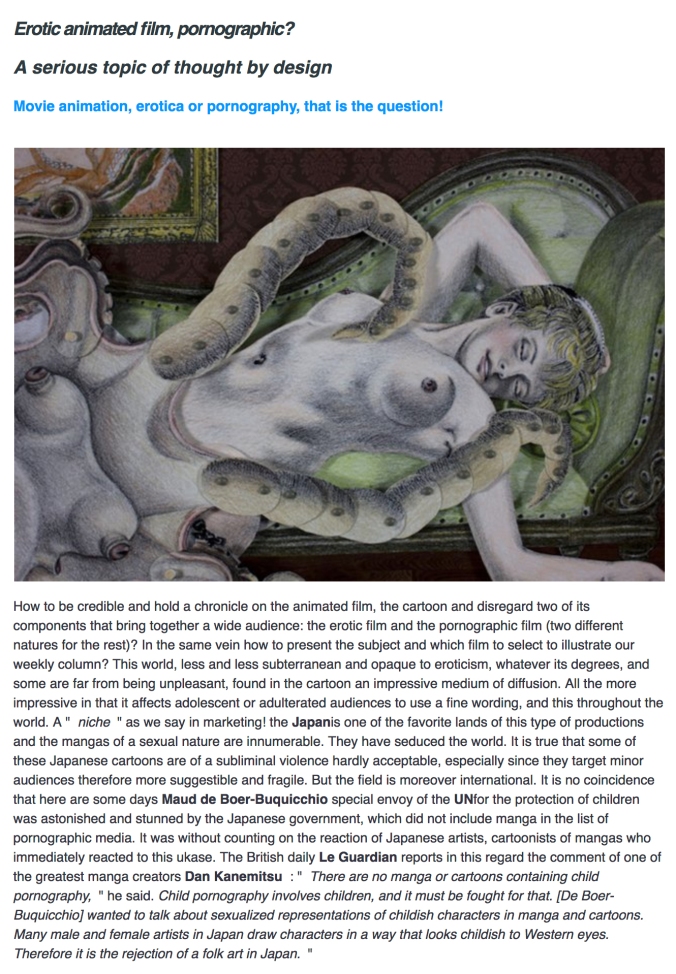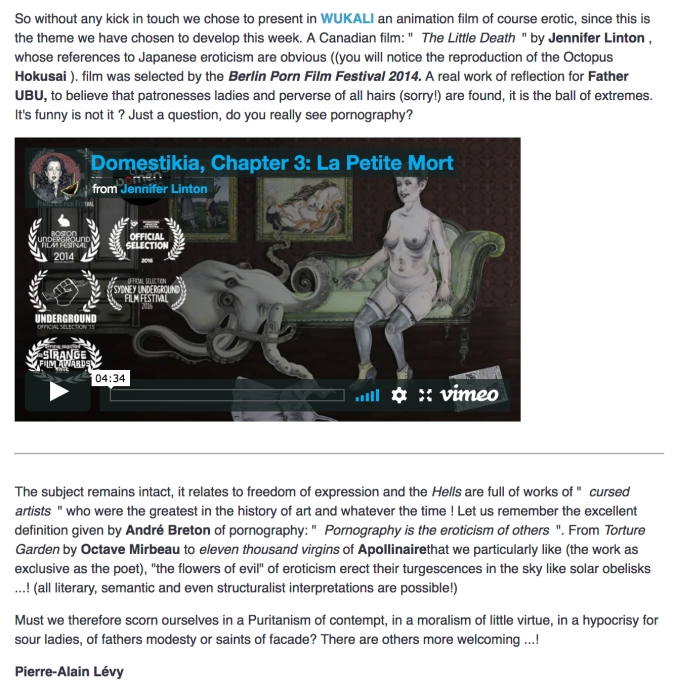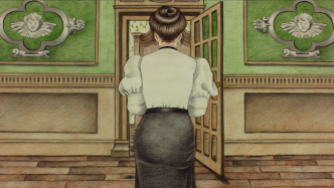Recently, I tripped across an online review for my animated short film La Petite Mort on a French-language arts & culture magazine called Wukali. At least, I think it’s a review. The reason for my uncertainty is, of course, the absolutely horrendous French-to-English translation offered by Google Chrome. The author, identified as Pierre-Alain Lèvy, seems to be discussing the difference between erotica — that classy, art-directed tease who promises, but never quite delivers — and her more hardcore sister, pornography. This discussion name-drops a short list of Western civilization’s erotic art heavy-hitters, including Apollonaire, André Breton and Octave Mirbeau — the latter best known for his written anthology of sadism entitled Torture Garden — and alludes to Charles Baudelaire through his mention of Flowers of Evil.
It is notable that most of the names mentioned in the article are 19th and early 20th-century French men (Lèvy also mentions male Japanese artists Dan Kanemitsu and Katsushika Hokusai). Conspicuously absent are the historical women artists working with erotic content. Even the most cursory glance back at the early 20th-century in France summons the names of celebrated women writers Anaïs Nin, Colette, and Pauline Réage (author of the BDSM-themed novel The Story of O), all of whom would serve as better antecedents to my female-generated erotica than either Mirbeau or Baudelaire.
That said, Lèvy does correctly detect the influence of Japanese erotic art on La Petite Mort. A tiny reproduction of The Dream of the Fisherman’s Wife by Katsushika Hokusai is prominently placed within the frame, providing a strong hint at what’s to come in the narrative. As with many of my animation projects, the concept for the film began with a single image — the Hokusai print, in this case — and developed outwards from there. I asked myself questions such as: “What happened before that image? And what happened after?” The resulting animation is my response to those questions.
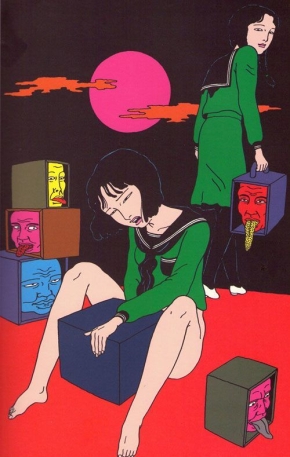
“Masturbation Box”, by Toshio Saeki.
A similar tactic was employed in the development of my most recent animation project Wunderkammer, which grew as a response to an image by Toshio Saeki from his print series Masturbation Box. An astute reader will have already noted that both the Japanese artists I’ve mentioned are men. Regrettably, there are very few Japanese women artists engaged with this type of ero-guro or “erotic-grotesque” imagery — at least, of which I am aware (Junko Mizuno is the one name that springs to mind, though I’d classify her work as more gothic kawaii than truly ero-guro). I consider my animations as female-lensed erotica engaged in a game of call-and-answer with the content produced by these male Japanese artists. Wunderkammer expands the universe surrounding Saeki’s image to a considerable degree, fleshing out the story with my other various fixations such as cabinets of curiosity, oddities, taxidermy, octopuses, and Edwardian-style costumes and furnishings. And, of course, that mysterious box.
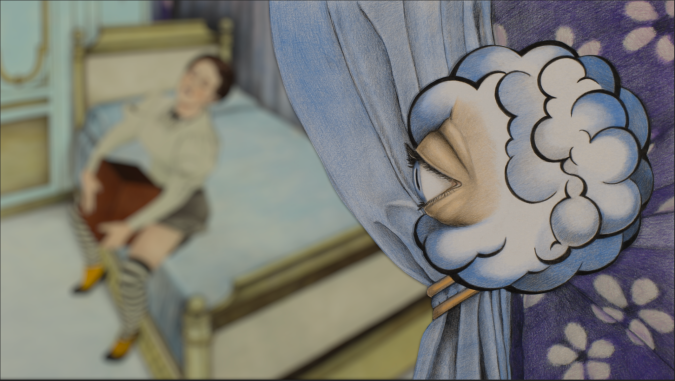
Work-in-progress video still from “Wunderkammer” (projected release date Fall 2018).
Below is a screen capture of the Wukali article and here is a link to the original French article, which I imagine makes considerably more sense than the translated version offered here (if you can read French, that is).
